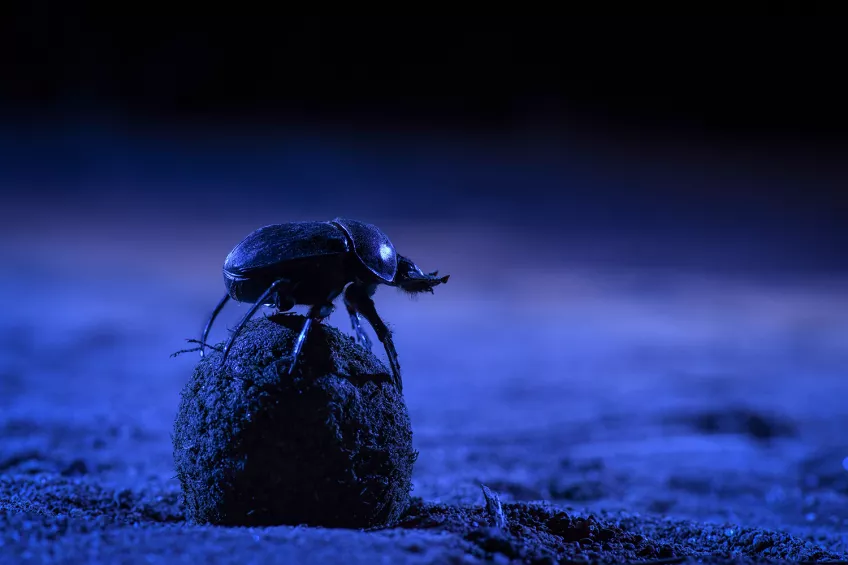Sensory Biology
Our research focuses on four main senses – vision, olfaction, taste and magnetoreception – and mostly in invertebrates. In addition, we also house a group working on other physiological aspects of animal function.
Animals use their sensory organs to detect and react to important sensory signals in the world around them. The sight, smell or sound of a potential mate, the tell-tale signs of an approaching predator or unsuspecting prey, or the guidance cues provided by the sun, the stars or the Earth’s magnetic field, are all important sensory signals that animals use to survive and reproduce.
We study the senses of animals at all levels, from the molecular level to behaviour, including the molecular basis of sensory transduction, the functions and properties of sensory receptor cells and the mechanisms of sensory processing in the brain. We are also very interested in how the senses of animals have evolved to be matched to the ecologies of animals – a field known as “sensory ecology” – which is also the topic of our world-famous biennial international postgraduate course of the same name. Some researchers also make applied studies of insect senses that have relevance for agriculture and forestry.
The Lund Vision Group
The Lund Vision Group (Lund University Research Portal) is internationally recognised as one of the leading centres for comparative visual science in the world. With around 50 members and 7 active research groups, our work on the visual systems of animals encompasses the entire animal kingdom, from jellyfishes, insects and crustaceans, to squids and vertebrates. Our areas of interest include the design and evolution of eyes, how eyes are adapted to different lifestyles and habitats, and how vision, together with other senses, is used for navigation and for controlling behaviour. Our techniques range from optics, electrophysiology and theoretical modelling, to microscopy, molecular biology and behavioural experiments and combine studies both in the field and in the laboratory.
The Pheromone Group
The internationally renowned Pheromone Group (Lund University Research Portal) was established some 40 years ago and currently includes around 20 members. Our research is centred on the chemical senses – olfaction and taste – and how chemical signals influence the ecology of animals, primarily arthropods. The main study organisms include flies, mosquitos, moths, beetles, ticks and spiders. Our techniques range from biochemistry and molecular biology to electrophysiology and behavioural experiments. We tackle fundamental questions about the evolution of pheromone communication, and how chemicals are utilised in insect-plant interactions and symbioses between insects and microbes. We also run applied projects, with the aim to improve management of harmful pests of agriculture and forestry as well as disease vectors.
The Pheromone Group is part of the Max Planck Centre next-Generation Insect Chemical Ecology (nGICE), which is a research excellence platform which also includes scientists from SLU Alnarp and the Max Planck Institute for Chemical Ecology in Jena, Germany. The Centre’s aim is to investigate how factors associated with the Anthropocene affect insect chemical communication, as well as to train the next generation of insect chemical ecologists.
Principal invastigators
All links go to the Lund University Research Portal
- Olle Anderbrant
- Martin N Andersson
- Michael Bok
- Marie Dacke
- Stanley Heinze
- Lina Herbertsson
- Fredrik Johansson
- Dineshkumar Kandasamy
- Dan-Eric Nilsson
- David O'carroll
- Kateryna Pierzynowska
- Elisa Rigosi
- Bodil Sjögreen
- Marcus Stensmyr
- Eric Warrant
All research staff in the division of Sensory biology.
Research groups
In Lund University's Research Portal, you will find our research groups which do research in the research area of sensory biology.




